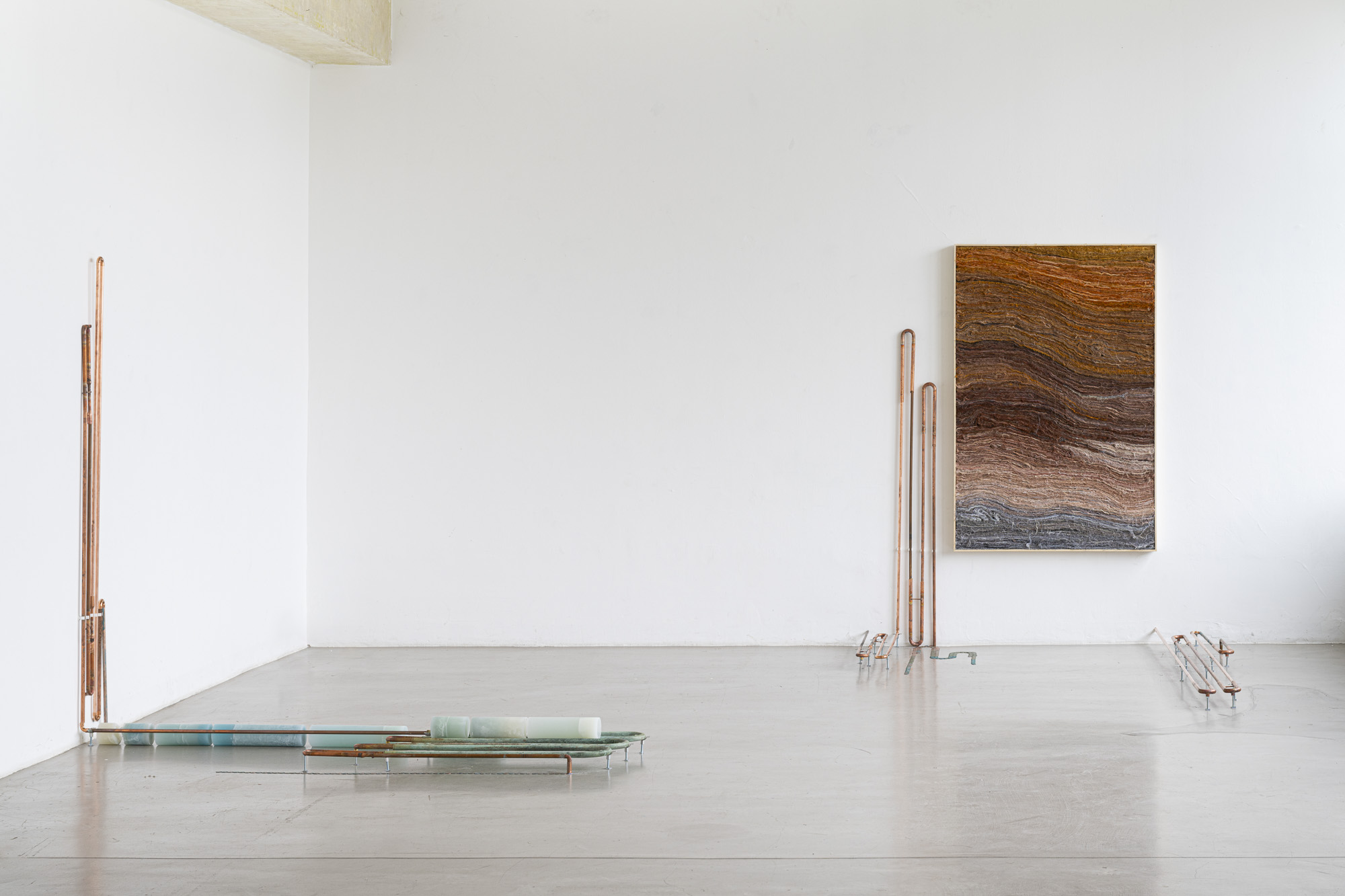Artists: Barbora Zentková & Julia Gryboś
Title: Undertones Between Serpentines
Venue: Nová Cvernovka, Bratislava
Text: Jiří Sirůček
Photo: Adam Šakový
When scientist and geologist James Hutton went to the rocky outcrops of eastern Scotland in the second half of the eighteenth century to investigate the history of the Earth, he remarked that he could not see in the endlessly layering material deposits “a single hint of a beginning, nor even the prospect of an end.” He was thus one of the first to discover that the Earth’s temporality exceeds humanity’s by billions of years and that its duration is so vast as to be almost impossible to conceive or comprehend at all. Indeed, the formation of even one mineral has been going on for longer than the entirety of human existence. However, sediments, rocks, minerals or strata also allow us to touch for a moment this deep planetary time and read the earth’s deposits as if they were archives of prehistory.








Thus, across its short duration, mankind can travel in materialized time for billions of years. By far the deepest glimpses into these are in mining, which mechanically uncovers ancient layers of the past to collect mineral materials. Accordingly, two types of time collide in the mines – the slow flow of planetary processes mixing with the speed of accelerated modernity and its desire for instantaneous performance. The pace of civilization, for which even seconds are an eternity, erodes elements of the deep past. But humanity does not only unearth the history of the Earth through mining, it also creates new layers at the same moment through its activity. These consist of accumulating waste and the remnants of consumer society, which, after a while of use, turn again into the dust of the earth and settle in the growing rows of the planet’s horizon. The incisions in the soil thus reveal not only the materialized past but also a clogged mirror of the present and a darkened vision of the future.









It is the focus on the Earth’s matter, however, that can attune us to a different temporality. This is also what the work of Barbara Zentková & Julia Gryboś brings us to, as they turn to “their” materials with sensitivity, tracing and taking into account their origins and duration, and handcrafting the peculiar properties of matter. The artists discover the stretching lines between the individual elements of their works, in whose layers one can uncover ancient moments of deep belonging. In doing so, they break out of the unstoppable social pace and confront it with a different, more deliberate and slower flow. Slowing down, however, does not mean resignation. On the contrary, the renunciation of reckless speed can serve as a necessary impetus for change. Just as the past is not only revealed to us in the mine formations but the planes of future times are already indicated in the traces of sediments, so too can art weave out of the past unexpected layers of what’s to come. By observing ancient ornaments with no apparent end or beginning, it can therefore be observed that a glimpse into deep time does not only have to go backwards. For prehistory is the battlefield of the future.
